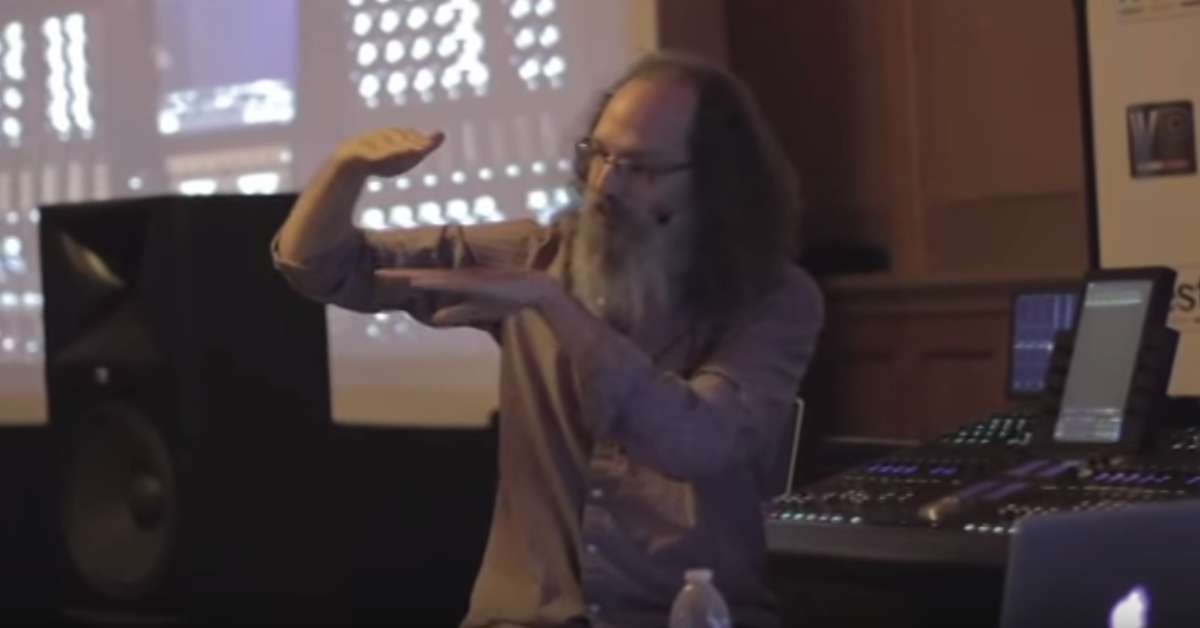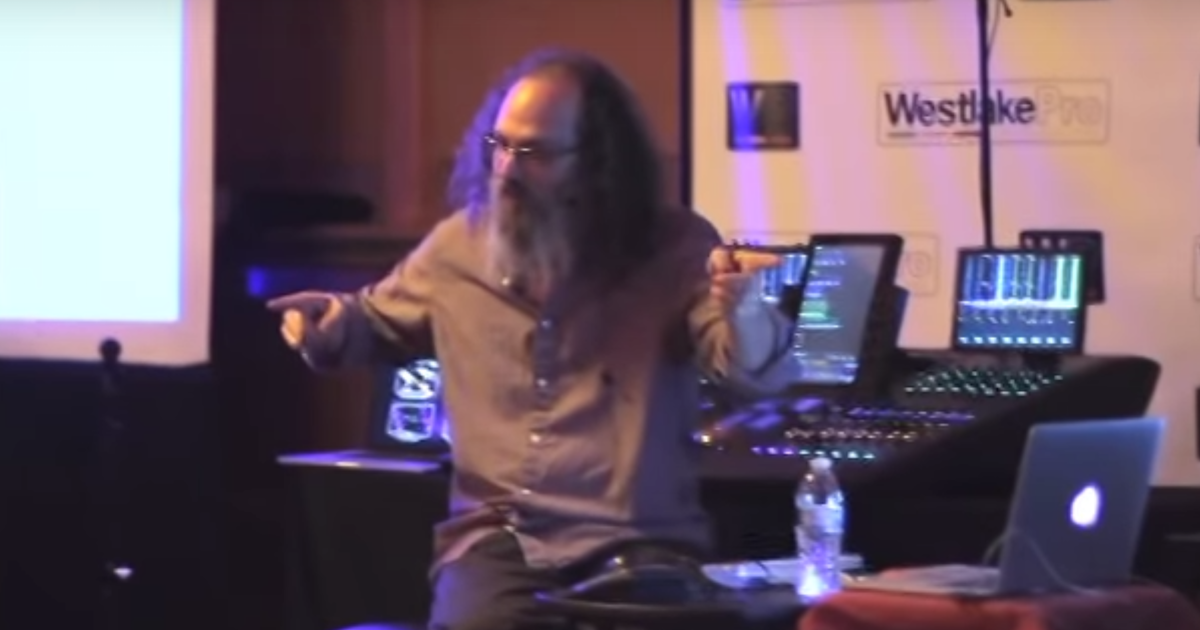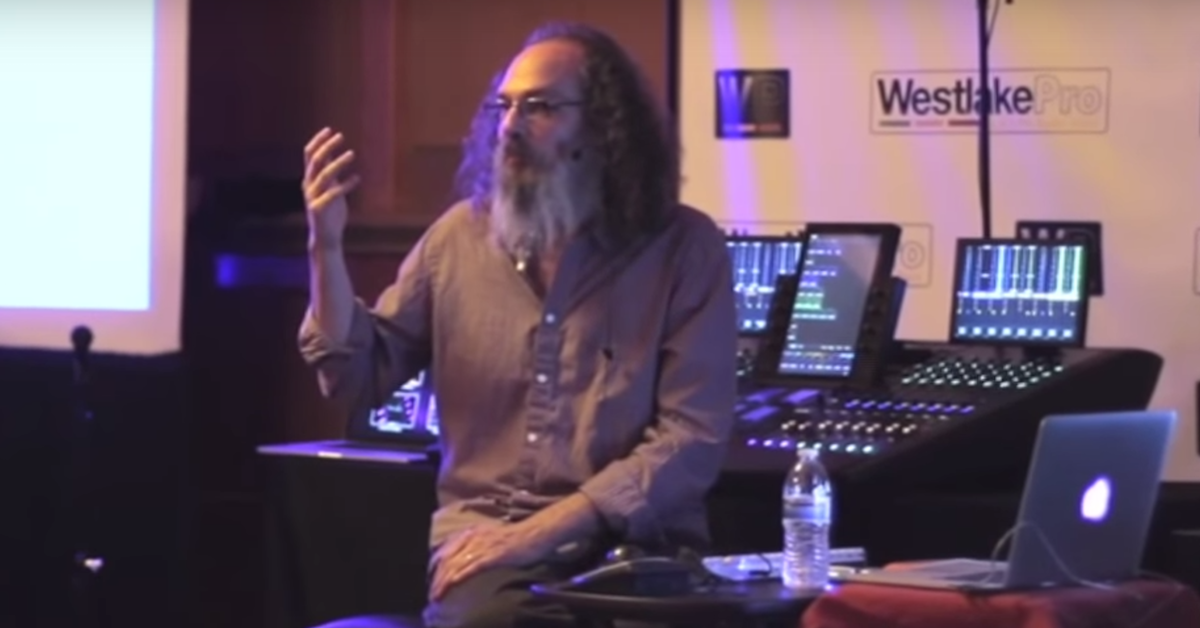Mixing Masterclass with Andrew Scheps — Part 5
So, we’ve got a kick/snare crush, which is the dbx 160, we’ve got, oh, snare reverb, okay, this is actually interesting on this, I’m not a fan of lots of reverbs, but this album calls for reverbs, and there are a couple of reverb things that are happening on here.
So one thing is if we listen to the drums…
[drums]
All this is doing is it’s replacing some of the length that was taken out by the gate, and the gate was put in by them while they were tracking, and I’m assuming it’s because they wanted super tight kick and snare, and they didn’t want the hat bleeding through and getting messy, but then the snare starts to feel really short, so this for me was more like changing the gate without letting the hi-hat through. It’s not 80’s snare reverb stuff.
Which I’ve done once or twice, because it’s kind of fun, whereas the tom reverb is completely 80’s, which I’m actually — I enjoy this. There’s not a lot of toms on this song, unfortunately. Let me see.
They’re only in this break, which made it even better.
So this tom reverb — and again, there’s not a whole lot of it — there’s a little filter on the way in to get rid of some top end so you don’t hear it as much, then some pitch shifting into just an ambient reverb, and this is absolutely 80’s and 90’s tom reverbs. I mean, am I right? It used to be, you know, AMS going into a plate or something like that. You’ve got this crazy pitch shifted tom thing, and I did it on a mix for no good reason, and now it’s in my template.
It’s on every single song. Sometimes, it gets used, sometimes it doesn’t, and that’s the joy of templates in Pro Tools, whatever. Every single good thing you ever do, you put in your template, and then you bring it in.
So anyway, then there’s a drum crush, which on this mix — and you can see, I’ve got five different plug-ins here. That’s just because there are five different compressors I’ve liked at one time or another on a certain song, and I’ll just go through and try them one at a time, and sometimes two of them stay on or whatever. So there’s a little Fairchild on that guy, then what do we got?
We’ve got the sub, a bass crush, which I don’t even know for sure that I’m using. It’s just another compressor. That’s just to even out the bass a little bit. But again, if I put that on the bass, I would be taking away all of the craziness that is in his playing, which is so awesome, but by using it parallel, I can kind of even out the notes and leave all of his finger stuff alone. It doesn’t touch it.
So that’s again where parallel compression is really cool.
Again, the sub on this is huge, and on the Ziggy thing, was about the kick, and blah blah blah, for this, it’s more about, is it the kick or is it the bass? And you get these moments where it’s just, “boom,” so when it stops, that’s the huge transition. That’s the power chords coming and going.
I was actually talking to — there was a student in England that wanted to ask me a question about teaching mixing, because he’s doing his dissertation on it, and I do things like this, and I teach at UCLA and stuff, so…
And what was really interesting about it, is we sort of — I got to the point where I realized there’s an incredibly technical side of it, which you need to learn immediately, so you can completely forget that you already know it, so that you can get back to the creative side, which is all about creating these moments in the songs, right?
Because the point of music is to create emotion in the listener, and all you’ve got is stuff coming out of the speakers. That’s it, that’s all you get to work with.
So it’s a way to create moments, and for me, low end creates moments. When that sub bass goes down the first time and sits there, that’s as much tension as you’ll get out of a high cluster of strings, or whatever, and then you release that tension and you’re off to something else. Then the third song will play, they’re very different sections that do that too, and when you listen to the section on its own, it’s really cool, but when you listen to that section coming after the section before, you get thrown off a cliff and it’s awesome, and it’s a real big deal.
So for this song, for me, it really became about the low end, and so I’m using sub on the kick, once again, I didn’t have to put sub on the basses. The programming on this song is insane, and there’s so few tracks really, but most of them are basses.
By the way, if you don’t know this plug-in, Low Ender by Refuse, it’s like, $49 or something like that on the website, it’s just got the quote from Tchad Blake that’s just like, “Low Ender, it’s a plug-in,” or something like that. It’s the most understated marketing campaign I’ve ever heard.
But it’s awesome. It sort of mimics what the old dbx sub boxes used to do, and it’s tweakable, and whatever. So that’s great for sub, but a lot of the sustain sub and things in the bass that came along with the tracks.
Obviously, the way she sings this track is so cool that it was all just about keeping out of the way, and one thing — I mean, I mostly work on live bands, which is awesome and it’s my favorite thing, but what you get with live bands is a lot of noise in the drums. You get things rattling, you get toms rattling, cymbals going, hi-hat, and the guitars, things are sustaining.
What’s great mixing in this genre is how self-contained every single sound is, and you just like, “Okay, that one’s going to go there, that’s going to go up there, this one is going to go there, this one is going to go like that,” and they do it every single time, and they never get hidden by anything, so I try to really take advantage of that. There’s, I mean — this is something I spent probably 40 minutes tweaking, and no one is ever going to know. Except you.




